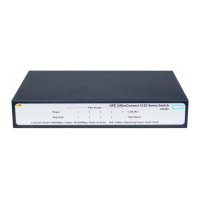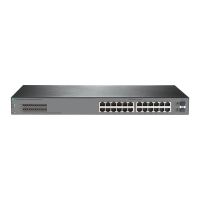153
Task Command
Display the IPv6 prefix information.
display ipv6 prefix
[
prefix-number
]
Display brief information about IPv6
RawIP connections.
display ipv6 rawip
[
slot
slot-number
]
Display detailed information about IPv6
RawIP connections.
display ipv6 rawip verbose
[
slot
slot-number
[
pcb
pcb-index
]
]
Display IPv6 and ICMPv6 packet
statistics.
display ipv6 statistics
[
slot
slot-number
]
Display brief information about IPv6 TCP
connections.
display ipv6 tcp
[
slot
slot-number
]
Display detailed information about IPv6
TCP connections.
display ipv6 tcp verbose
[
slot
slot-number
[
pcb
pcb-index
]
]
Display brief information about IPv6 UDP
connections.
display ipv6 udp
[
slot
slot-number
]
Display detailed information about IPv6
UDP connections.
display ipv6 udp verbose
[
slot
slot-number
[
pcb
pcb-index
]
]
Display IPv6 TCP traffic statistics.
display tcp statistics
[
slot
slot-number
]
Display IPv6 UDP traffic statistics.
display udp statistics
[
slot
slot-number
]
Clear path MTUs.
reset ipv6 pathmtu
{
all
|
dynamic
|
static
}
Clear IPv6 and ICMPv6 packet statistics.
reset ipv6 statistics
[
slot
slot-number
]
Clear IPv6 TCP traffic statistics.
reset tcp statistics
Clear IPv6 UDP traffic statistics.
reset udp statistics
Basic IPv6 settings configuration examples
Example: Configuring basic IPv6 settings
Network configuration
As shown in Figure 56, a host, Switch A, and Switch B are connected through Ethernet ports. Add
the Ethernet ports to corresponding VLANs. Configure IPv6 addresses for the VLAN interfaces and
verify that they are connected. Switch B can reach the host.
Enable IPv6 on the host to automatically obtain an IPv6 address through IPv6 ND.
Figure 56 Network diagram
Procedure
This example assumes that the VLAN interfaces have been created on the switches.
1. Configure Switch A:
# Specify a global unicast address for VLAN-interface 2.
<SwitchA> system-view

